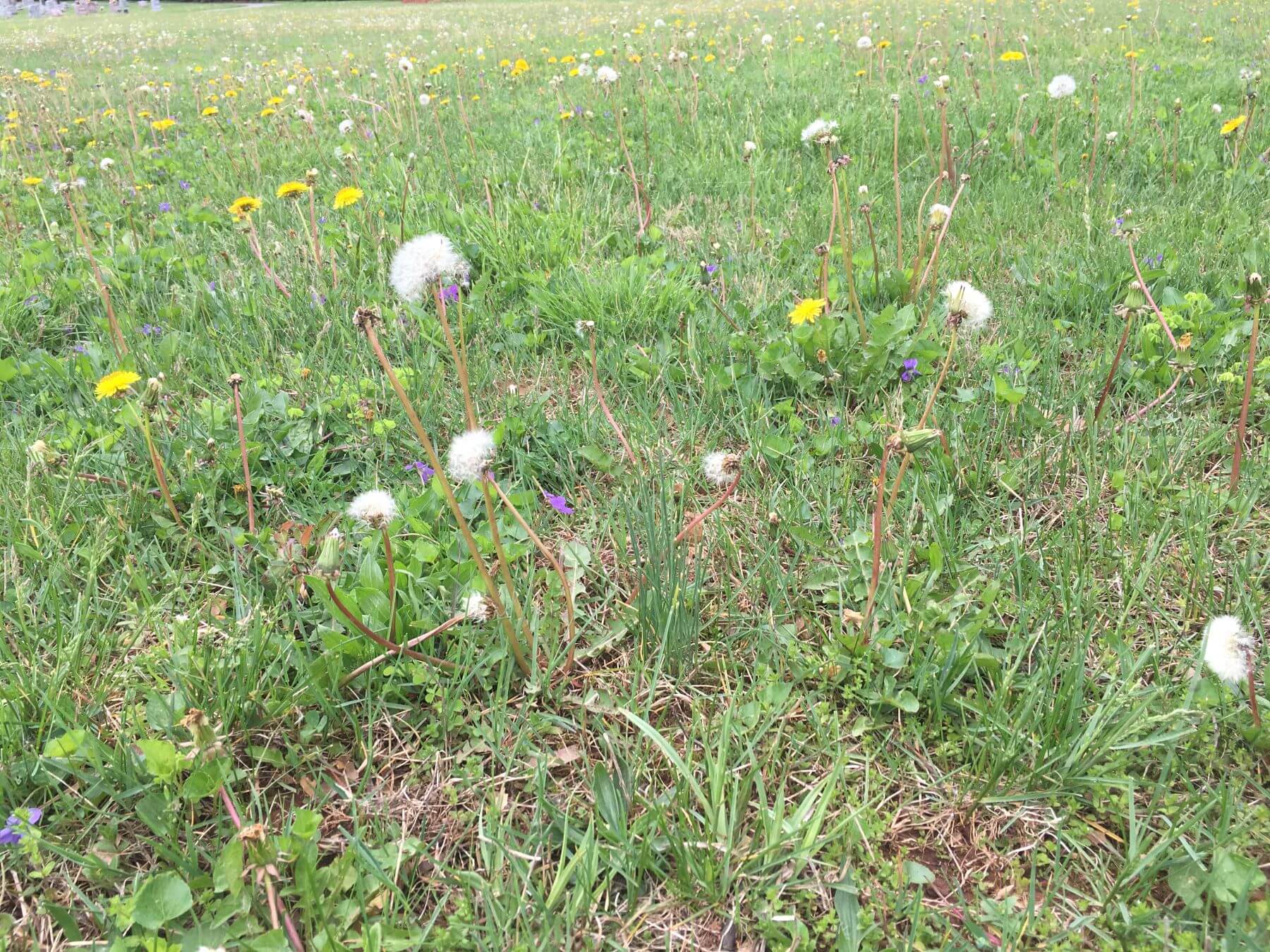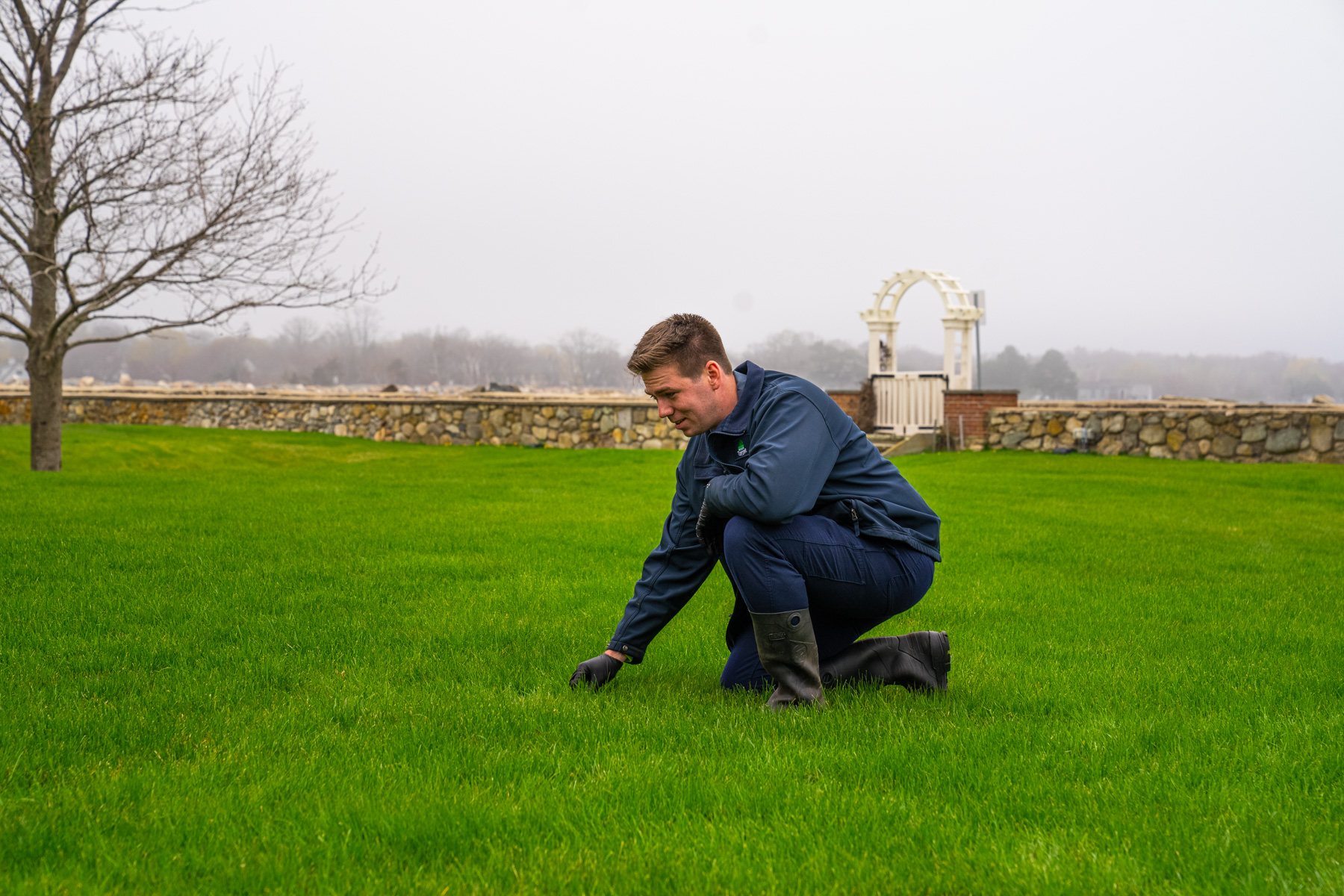


Here in New England where we get a lot of snow and ice, using salt as a deicer is a common occurrence. While rock salt products can effectively melt both snow and ice, they can also cause salt damage to grass.
Salt can damage a lawn in a few different ways. It can remove moisture from the soil and dry out your grass plants. Too much salt in the soil can also make it toxic to your grass.  While you (or a snow removal service) probably didn’t mean to get salt in the lawn, it can end up there during plowing or when a sprinkled deicer migrates from the intended surface.
While you (or a snow removal service) probably didn’t mean to get salt in the lawn, it can end up there during plowing or when a sprinkled deicer migrates from the intended surface.
In this article, we’ll talk about how salt can affect your grass and what you can do to prevent salt damage to a lawn.
We’ll cover:
What Does Salt do to Grass?
What Lawn Safe Ice Melt Options do I Have?
How to Repair Salt Damage to a Lawn
How to Revive Your Lawn After the Winter
Choosing Lawn Care in Southern NH, Northeastern Massachusetts, and Southern Maine
After reading this article, we hope that you’ll feel set up for success, even during the harshest months.
As we mentioned, salt can damage grass in a few ways. These issues can ultimately lead to your lawn turning brown or even dying.
One way to prevent salt damaged grass, is to choose lawn safe ice melt products. There are different options on the market. For instance, calcium chloride products instead of sodium chloride products are a better choice.
Calcium Chloride product
These products do cost a little more but considering how expensive it can be to repair a damaged or dead lawn, it’s worth it.
It can also make a huge difference when products are applied sparingly and cautiously. While you have better control over applying these products yourself, if you are using a snow removal service, we realize this is out of your control. If you’ve had issues with salt damage in the past, it’s important to talk to your provider.
Preventing salt damage is always going to be easier than fixing it. But we know that sometimes things happen. And it’s not always in your control. Sometimes salt damage is the result of street plows pushing snow from a de-iced street into your lawn.
Some areas of the lawn will bounce back on their own, particularly if the salt didn’t make its way down into the soil or if it was only a minimal amount. However, any areas where salt ends up killing a lawn will need to be re-seeded. .jpg?width=1800&height=1350&name=aeration%20holes%20plugs%20and%20seed%201%20(1).jpg) If you’ve lost a significant amount of grass, you’re going to need to consider a heavier-duty restoration service that involves digging out that soil (as there’s likely still salt in it) and starting over. But most of the time, these severe cases are unlikely.
If you’ve lost a significant amount of grass, you’re going to need to consider a heavier-duty restoration service that involves digging out that soil (as there’s likely still salt in it) and starting over. But most of the time, these severe cases are unlikely.
Of course, salt damage to a lawn is not your only winter worry. We’ve written an entire article on winter lawn damage that will be helpful to read if you’re concerned about your lawn. Other problems include snow mold, voles, crown hydration, and winter desiccation. Knowing how to handle potential winter lawn problems can make a huge difference to the health of your lawn.
Sometimes, you simply need to wait things out and see how your lawn looks when spring rolls around. As we mentioned, some issues with salt damaged grass may resolve themselves, particularly if it was not severe. One of your best chances for helping revive your lawn after the winter is investing in professional lawn care. Getting on an optimal lawn care schedule will help better prepare your lawn for the winter. It will also help your lawn bounce back more easily from winter lawn damage.
One of your best chances for helping revive your lawn after the winter is investing in professional lawn care. Getting on an optimal lawn care schedule will help better prepare your lawn for the winter. It will also help your lawn bounce back more easily from winter lawn damage.
If you have questions about how to repair winter lawn damage, your lawn care professional will be able to help. One of the benefits of partnering with a lawn care pro is that you’ll have an expert guide helping you determine what’s best for your New England lawn. You aren’t on your own in making these decisions!
Lawns can be demanding. Particularly here in New England where we have harsh weather. But with a lawn care pro on your side, you’ll gain peace of mind that you’re making the best decisions for your lawn.
When you work with Seacoast Turf Care, it’s our goal to help take away your worries. We know that things like salt damage to a lawn can be stressful. But we’re here to help you navigate those concerns.
That means letting go of your winter worries and feeling confident that you are in good hands. It doesn’t mean that you’ll never have any problems. As we explained, many problems are weather-dependent and out of our hands. But you can be sure that we’ll be there to help implement the best solutions and advice. We’re here to be your partner in success.
Want to learn more about what makes us a great choice for your lawn care needs? At Seacoast Turf Care, we service NH towns near Stratham, North Hampton, Exeter and many more. Get lawn care pricing for your Southern NH, Southern Maine, or Northeastern Massachusetts property.
Image Sources: snow plow, calcium chloride